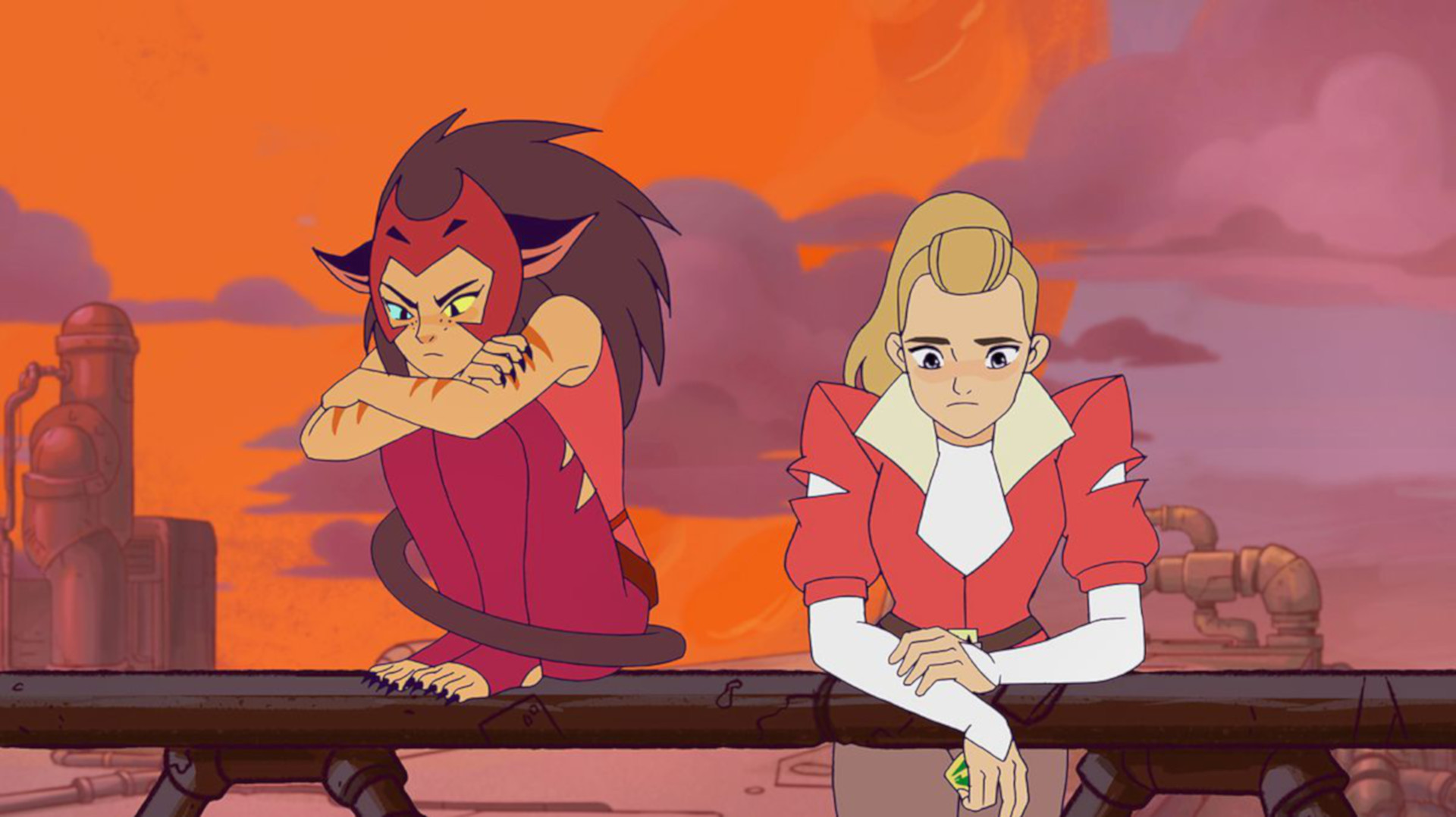I’ll freely admit that I was never a fan of the original 80s animated TV show “She-Ra: Princess of Power”. It was a spinoff, and I saw it as an afterthought, a token also-ran to the craven toy-selling series “He-Man and the Masters of the Universe”. In hindsight it’s not really surprising that even at a young age, I was tired of female representation being served up as watery seconds.
When Netflix debuted their reboot in November, I was unenthused; until, that is, I learned that the creator is none other than Noelle Stevenson, whose comic book series Lumberjanes and whose graphic novel Nimona (which I’ve written about here) are decidedly queer-friendly.
At any rate, even without my encouragement, our kids discovered it and insisted we give it a try; and I’m so glad we did. While the animation itself is not terribly sophisticated, the stories that the series is telling about female friendship definitely are – even more so in the second season that just debuted today.
The heroine, Adora, is a loyal footsoldier in the army trying to civilize a wild planet. She finds a mysterious and powerful sword in the woods, and is transformed into She-Ra; when she leans that the army she’s been fighting with is an evil invasion force, she leaves the Horde and joins the Rebellion trying to save Bright Moon, angering and alienating her best friend Catra, who remains part of the Horde.
Adora/She-Ra quickly allies herself with two new friends: Glimmer, the Princess of Bright Moon who has teleporting abilities, and Bow, her friend and a skilled archer. While the three clash with Catra often, being on opposite sides of a war, there is a definite bond remaining that neither Catra nor Adora can quite shake off.
The characters and settings are mostly drawn in bold lines without much detail, though there is a bright colour palette to offset the lack of expression, and I suppose for a streaming service like Netflix, bold and simple lines are better for viewing on a mobile device. The character design is light years better than the miniskirted original, with females clad in all variations of uniforms, armour, and what could easily pass for comfortable athletic wear. it’s also much more diverse in skin tones and body shapes, as opposed to the original’s Barbie-style, all-white cast of characters.
Of the trio of main characters, our family’s favourite is Bow, the midriff-baring archer who is steadfastly loyal to his friends. In part, I appreciate that there is no patched-in romance between Bow and Adora/She-Ra or Bow and their friend Glimmer. While I do enjoy a good friends-to-lovers trope (thank you, When Harry Met Sally), I also love seeing male-female friendships depicted on screen and page.
That’s not to say there isn’t any romance in the series. One of the Horde soldiers, Scorpia, is fiercely devoted to Adora’s former Horde bestie Catra in a way that could definitely be coded as attraction. While the show is keeping the bond between them as friendship, there’s potential for a romance between the two to enter the show’s canon, and that’s an exciting prospect.
In the meantime, there are [SPOILER!!] Bow’s canonically gay dads, whom we meet in the second season’s finale. Granted, it would have been nice to have out gay characters earlier, but at least they’re there and representing for queer families. I hope we see a lot more of them, and more non-binary and queer characters, come out in season three due in August.
